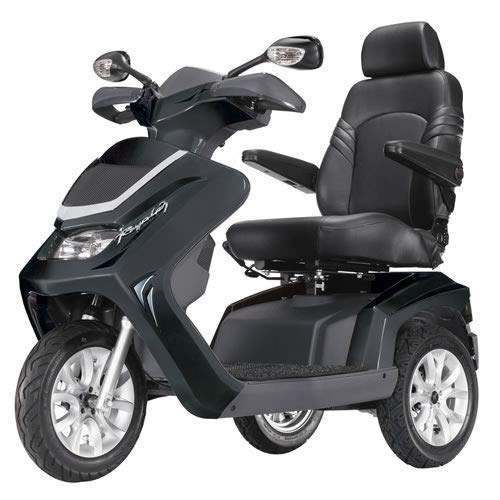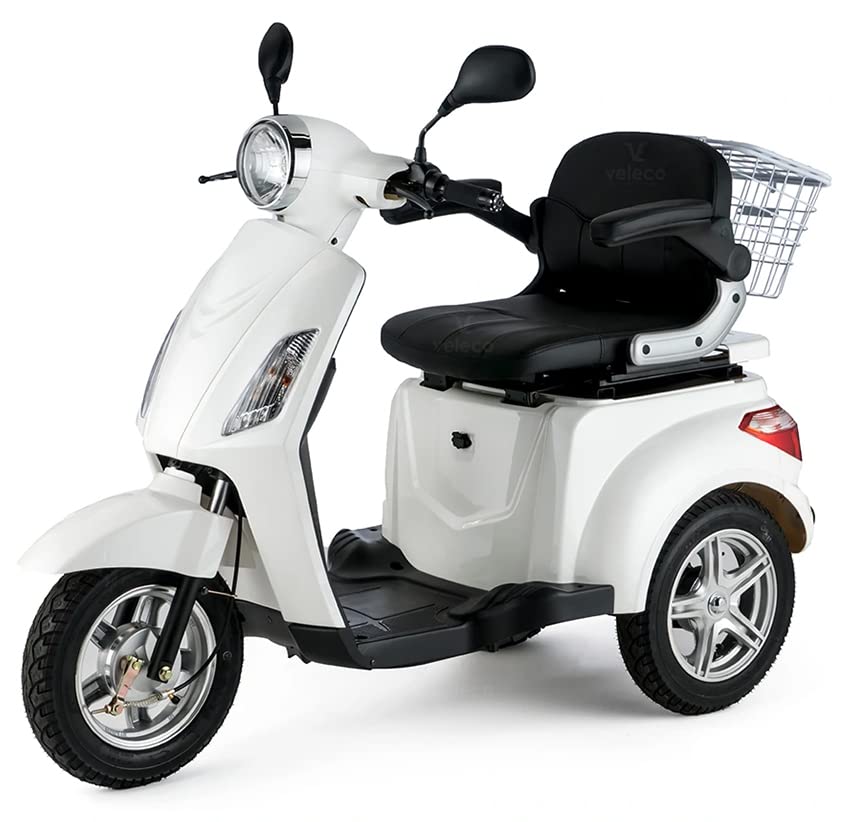What's The Job Market For Mobility Scooters Road Or Pavement Professio…
페이지 정보

본문
 The Basics of Using a Mobility Scooter on the Pavement
The Basics of Using a Mobility Scooter on the Pavement Mobility scooters can be lifesavers for those who are struggling to maintain their physical health. They enable them to travel farther distances and make getting out and about much easier.
Mobility scooters can be lifesavers for those who are struggling to maintain their physical health. They enable them to travel farther distances and make getting out and about much easier.Class two scooters should not be driven faster than 4 mph in the roadway and should not be driven on cycle lanes, bus lanes or sidewalks. They should also not be driven on dual carriageways unless they're carrying an active amber flashing light.
Scooters on the road
Mobility scooters can be a practical and popular mode of transportation for those with limited mobility. However, they must always be used in a safe manner. In addition to keeping the vehicle in line with manufacturer guidelines, drivers must also follow local regulations and be aware of dangers for pedestrians and other vehicles. The first step to using a mobility scooter is to be familiar with the local rules and rules.
In general, scooters should only be used on sidewalks and paths, not on roads. They're not designed to withstand vehicular traffic and speeds, and could cause injury or damage to other road-users. Scooters are also more difficult to stop and are more difficult to see. It is essential to wear reflective clothing and to keep your eyesight current when you are riding a motorcycle on the road.
Certain municipalities restrict the areas you can ride your mobility scooter, but in general it is safe to ride on most streets. In low-visibility areas, it is recommended that you use a mirror that faces towards the front and headlights. It is also recommended to use an rear-view mirror to be able monitor other vehicles and obstacles. If you're not sure about how to operate a mobility scooter on the road, it's best to enroll in a class provided by local schools or insurance companies.
Mobility scooters of Class 3 can be driven on the road but they shouldn't be used in cycle-only or bus lanes. They should also be kept off dual carriageways with speed limits over 50 mph. In addition, it's advisable to equip the scooter with an amber flashing light to increase its visibility on these roads.
When riding a scooter it is crucial to make sure that you are visible to other drivers. You should also ensure that your scooter is equipped with a sufficient lighting system to reduce the risk for collisions. It's also a good idea to avoid riding a scooter on the road legal mobility scooters uk at night, since it can be dangerous for the other road users and you.
Scooters on the pavement
There's no doubt that mobility scooters have given thousands of people in the UK the freedom to navigate their surroundings with ease. However, it's important to remember that these vehicles are classified as a vehicle type and therefore must be used carefully. Many people who are new to driving mobility scooters aren't aware of the rules and regulations around them. This article will cover the basics of how to safely ride a scooter on the pavement.
There are two classes of mobility scooter that are class 2 and class 3. Class 2 scooters are permitted to be driven on the pavement and in pedestrian areas, they have a maximum speed limit of 4 mph. Class 3 scooters can be driven on road and the pavement, and their speed can be increased to 8 mph.
As a general rule, it is not legal to drive a scooter on bus lanes or cycle lanes. This is to prevent collisions between scooter riders and motorists. Also, it is not legal to park mobility scooters on pavement if it will block access to pedestrians or if it causes obstruction.
Pedestrians must give way to those using wheelchairs or pushing prams. Mobility scooters can mobility scooters drive on the road pose a risk for pedestrians due to their heavy and fast. This is especially true when pedestrians aren't paying attention or have hearing or vision limitations.
If you're planning on travelling through shops on your scooter, it's worth keeping in mind that most doors in shops are made for wheelchairs as well as smaller pavement scooters. You should also only travel at pedestrian speed that is not more than four mph, as people tend to walk slower inside shops.
If you plan to use your mobility device while on public transport, make sure it adheres to the guidelines of the Confederation of Passenger Transport for getting on and off buses. You will usually be required to attend a course in order to use your mobility scooter when traveling on buses.
Scooters on the streets
Mobility scooters are used by some older adults to move around. They can aid them remain independent and avoid the need to move into a place for assisted living. But they should be aware of the rules of the road and how to operate their scooter safely. Wear a helmet, maintain it in good shape, and don't use it in rainy weather. They must also adhere to all traffic laws and be sure to stay on the right side of the road.
Many municipalities limit the roads that mobility scooters can travel to ensure safety and avoid congestion. Scooters are designed to be used on sidewalks and pedestrian areas. In the event that they are allowed to travel on roads, it could disrupt the flow of traffic. These restrictions aren't always followed and it is essential to be aware of local laws.
Generally speaking, mobility scooters are not allowed on roads and areas with high traffic even though they travel faster than a vehicle. In addition, they're not allowed to travel in cycle lanes or bus lanes, which could be hazardous for drivers and other users of the road. If you're unsure of the laws in your area, it is best to purchase insurance for your scooter.
Mobility scooters can be utilized on sidewalks, and in other areas for pedestrians. They should be operated at a moderate speed. So, they don't present a risk to pedestrians and do not hinder traffic. They must be aware of traffic signals and cross the street only at designated crossings. They must also be visible by wearing bright clothing and using reflective gear.
Insurance is not a requirement of law, but is highly recommended. It will protect you from any accident or loss, and will cover repair costs in the event that an unavoidable failure occurs. It's also an excellent idea to invest in some extra equipment, like a scooter flag or reflectors to improve your visibility and make you stand out from the crowd. You may also want to consider breakdown cover as this can mobility scooters go on the road help you when your scooter is damaged in the middle of the road.
Scooters in the car park
Mobility Scooters Road Or Pavement scooters are an excellent option to gain independence and freedom when you are not able to walk. They permit users to move in their area without relying on the schedules of family or friends. They also offer a great way to reach nearby shops and cafes. However, the growth in popularity of these scooters could have positive and negative effects on urban environments.
Some areas may not be equipped to allow scooters on sidewalks or pathways, despite the fact that the majority of countries do. The scooters are too heavy and bulky to be able to maneuver in such spaces. Also, some obstacles such as garbage bins or trees may make it difficult for them to move. Furthermore, these scooters are often used 8mph mobility scooters second hand by older people with limited mobility scooters road legal, making them more susceptible to falls.
It is essential to be aware of the laws and rules that govern scooters in public. For instance, in the UK, all scooters must be operated at 4 mph on pavements and in pedestrian-friendly areas. Furthermore, they are not allowed to be parked on sidewalks since this can block the access of other pedestrians.
It is also important to know that scooters are not allowed to be driven on cycle lanes or bus lanes, and they should not be parked where they interfere with access for other users who require mobility scooters. Additionally, scooters should not be driven on dual carriageways unless they have an amber flashing light that is active and active.
In addition, scooters can be parked in handicap parking spaces provided they have ramps that are accessible and comply with relevant laws. These rules are pretty common across the country, but it is important to check your local laws to ensure you're not in violation of any.
The growing popularity of mobility scooters has resulted in the need for parking spaces that are adequate in the UK. The parking spaces should be close to the homes of the users and close to the places they frequent. Ideally, these spaces should also be secured from weather and theft. This way, the rising number of scooters can positively affect the design of urban spaces by ensuring a safe environment for both scooter drivers and pedestrians alike.
- 이전글Five Killer Quora Answers On Situs Terpercaya 24.09.13
- 다음글Adult ADHD Medication Uk Tools To Ease Your Daily Lifethe One Adult ADHD Medication Uk Trick That Every Person Must Know 24.09.13
댓글목록
등록된 댓글이 없습니다.